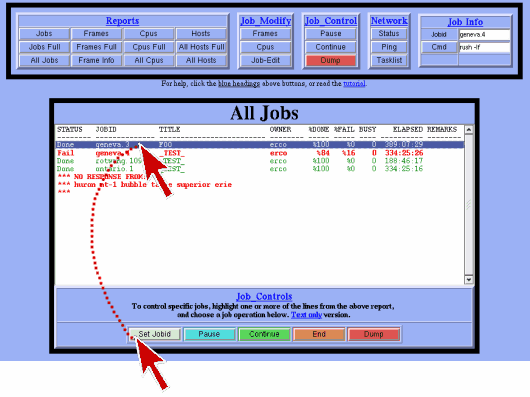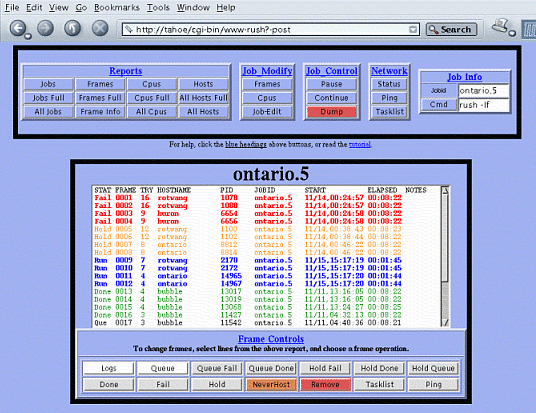|
Assuming you have one or more jobs running, the first thing you'll want to
do is set the Jobid in the Job Info subpanel, so you can work with it.
Another way to set the jobid is to hilight jobs from a Jobs report.
The following shows you how to do that.
At very least, enter a hostname in the Jobid input window that is the
name of your job server, then hit the Jobs button.

This will give you a report showing all the jobs being served by that machine.
When the screen updates, you'll see a jobs report in the text window, followed
by buttons that will let you control jobs.
Select the job you want to control by clicking on it in the text window, then
hit the Set Jobid button below, to make that the new 'current job':

Note: Similar to the grouping in the upper panel, all the buttons below the text
window are grouped with the text window in a black box to show these buttons
are tied to selections made in the text window. Anything you hilight in the window
will be affected by the operation buttons below.
When the screen updates, the Jobid field will now show the 'va-222'
jobid, and a message indicating the new jobid has been set.

| 

